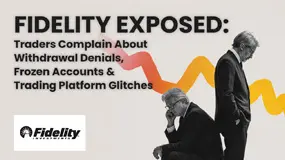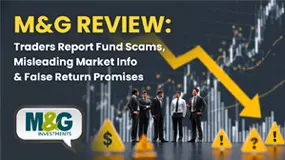简体中文
繁體中文
English
Pусский
日本語
ภาษาไทย
Tiếng Việt
Bahasa Indonesia
Español
हिन्दी
Filippiiniläinen
Français
Deutsch
Português
Türkçe
한국어
العربية
How to Place A Stop Loss Order in Forex Trading
Abstract:As a forex trader, your first responsibility is to protect your trading account from being obliterated by Forex losses.

One of the beast ways to ensure this does not happen is to use a stop-loss order to limit your risk exposure. Stop losses are most effective at protecting capital from being lost through indecision. The proper use of stop losses can increase the degree of control an individual has in managing risk. In this article, we will discuss the main points related to a stop-loss in forex and list some effective strategies for placing stop orders.
What Is A Stop Loss?
A stop-loss order is a type of advance order that allows you to automatically exit a position in order to limit losses and reduce risk exposure when price movements are more adverse than you are willing to accept. Sometimes called a stop loss, stop order or stop market order, this tool is an automatic instruction to sell an open position when the price drops to a pre-set losing limit, ensuring your losses do not grow too big. As the stop loss is a standard free feature of all trading platforms, it's one of the most important risk management tools in a forex traders armoury to mitigate against losses. There are 3 types of stop loss orders:
Percentage Stop
A percentage stop loss order is exactly what it sounds like. Instead of telling the broker at what exchange rate you'd like your order to be closed, you simply tell them what percent of your entire invested amount you are ready to lose. For example, if you are willing to risk 3% of the value of your trading account, you can set a stop-loss equal to 3% of the size of the account.
Volatility Stop
A volatility stop is when a trader indicates how much volatility of an asset is too much for them. Setting your stop-loss based on volatility is a prudent method given that it is based on a currency pair's price movements in the past, which can be a good indicator of future performance.
There are a number of ways you can track volatility in order to place your stop-loss order at a safe distance with the most popular ones involving the use of Bollinger bands and the average true range (ATR) indicator.
Chart Stop
A chart stop is the most common stop loss order of them all. For example, if you the current exchange rate of EUR/USD is 1.18156 and you think that it may increase to 1.20000 but you are not really sure. Other signs say that it could even drop to 1.15000. So, what you do is you place a stop loss order at 1.16000. If the exchange rate drops to this amount, it's almost guaranteed to continue falling, so it might as well cut your losses short with this order.
In general, Stop-Loss orders for SELL trades are always placed above entry / current price, while Stop-Loss orders for BUY trades are always placed below entry / current price.
Time Stop
These stop-losses are set based on a pre-specified period. For instance, you can choose to close a trade position at the close of the day, or when the Tokyo-London overlap is over. On Friday, you can decide to close the trades you don't wish to hold over the weekend .
Why Is A Stop Loss Important?
No matter how closely one might try to monitor the market, it is impossible to accurately predict Forex market movements. even the savviest trader can find themselves on the adverse side of a market move. When severe market dips happen, stop loss trading can help to close out your position and prevent excessive losses.
Stop-losses prevent large and uncontrollable losses in volatile trades. If youre not using stop-losses, it's only a matter of time when a large losing position will get out of control and wipe out most of your trading profits, eventually even your entire account. Here are some advantages of using stop loss orders:
-It provides protection from excessive losses
-Enables investors for better control of their account
-Helps to monitor multiple deals
-Automatically executed
-Easy implementation
-Allows you to decide the amount you are willing to risk
-Promotes discipline
Tips on Using Stop Loss in Trading
To set your stop loss like a professional trader in forex, here's what you have to do:
1. Determine your stop-loss placement in advance
Before entering into a trade, you need to be very clear on the level of risk you will take in that trade. If you have no idea where you should place your stop-loss or when to get out of that trade, then don't take this trade.
2. Avoid very tight or wide stops
Avoid using very tight stop-loss orders unless the trade setup warrants such a move. For example, if you have a profit target of 100 pips on the EUR/USD currency pair in a volatile market, you are better served using a wider stop-loss to accommodate the price volatility.
The opposite of very tight stop-loss orders is very wide stop-loss orders, which either increase your chances of making huge losses by being overly exposed to the markets or cause you to trade very small positions. Follow the above guidelines to ensure that you place your stop-loss orders at the right distance, neither too wide nor too short.
3. Use a simple stop-loss strategy
Trade in the overall trending direction with a simple stop loss method. Don't complex your trading journey with multiple stop loss method. Choose one which is logical and straightforward to you.
4. Do not set stop loss on support and resistance levels
Never place your stop-loss orders exactly on a resistance or support line as price tends to whipsaw around such areas as the bulls and the bears fight for control. Always leave a safe distance between a support or resistance level and your stop-loss order.

Disclaimer:
The views in this article only represent the author's personal views, and do not constitute investment advice on this platform. This platform does not guarantee the accuracy, completeness and timeliness of the information in the article, and will not be liable for any loss caused by the use of or reliance on the information in the article.
Read more

Fidelity Exposed: Traders Complain About Withdrawal Denials, Frozen Accounts & Platform Glitches
Does Fidelity Investments prevent you from accessing funds despite numerous assurances on your requests? Do you witness an account freeze by the US-based forex broker every time you request withdrawal access? Do you struggle with an unstable trading platform here? Is the slow Fidelity customer service making you face forced liquidation? These issues haunt traders, with many of them voicing their frustration on several broker review platforms such as WikiFX. In this Fidelity review article, we have shared quite a few complaints for you to look at. Read on!

Exposing The Trading Pit: Traders Blame the Broker for Unfair Withdrawal Denials & Account Blocks
Did you receive contradictory emails from The Trading Pit, with one approving payout and another rejecting it, citing trading rule violations? Did you purchase multiple trading accounts but receive a payout on only one of them? Did The Trading Pit prop firm refund you for the remaining accounts without clear reasoning? Did you face account bans despite using limited margins and keeping investment risks to a minimum? These are some raging complaints found under The Trading Pit review. We will share some of these complaints in this article. Take a look.

M&G Review: Traders Report Fund Scams, Misleading Market Info & False Return Promises
Applying for multiple withdrawals at M&G Investments but not getting it into your bank account? Do you see the uncredited withdrawal funds out of your forex trading account on the M&G login? Does the customer support service fail to address this trading issue? Does the misleading market information provided on this forex broker’s trading platform make you lose all your invested capital? Were you lured into investing under the promise of guaranteed forex returns? These issues have become highly common for traders at M&G Investments. In this M&G review article, we have echoed investor sentiments through their complaint screenshots. Take a look!

INZO Broker MT5 Review 2025: A Trader's Guide to Features, Fees and Risks
INZO is a foreign exchange (Forex) and Contracts for Difference (CFD) brokerage company that started working in 2021. The company is registered in Saint Vincent and the Grenadines and regulated offshore. It focuses on serving clients around the world by giving them access to popular trading platforms, especially MetaTrader 5 (MT5) and cTrader. The company offers different types of trading instruments, from currency pairs to cryptocurrencies. It aims to help both new and experienced traders. Read on to know more about it.
WikiFX Broker
Latest News
2 Malaysians Arrested in $1 Million Gold Scam Impersonating Singapore Officials
Moomoo Singapore Opens Investor Boutiques to Strengthen Community
OmegaPro Review: Traders Flood Comment Sections with Withdrawal Denials & Scam Complaints
An Unbiased Review of INZO Broker for Indian Traders: What You Must Know
BotBro’s “30% Return” Scheme Raises New Red Flags Amid Ongoing Fraud Allegations
The 5%ers Review: Is it a Scam or Legit? Find Out from These Trader Comments
WikiEXPO Dubai 2025 Concludes Successfully — Shaping a Transparent, Innovative Future
Admirals Cancels UAE License as Part of Global Restructuring
Forex Expert Recruitment Event – Sharing Insights, Building Rewards
Exness Broker Expands in South Africa with Cape Town Hub
Currency Calculator



